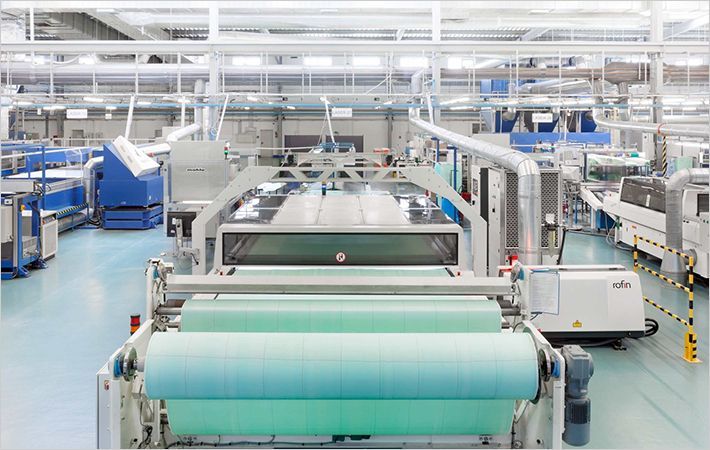To embed RFID tags in fiber composites, ultra-thin antennas are needed (right: UHF, left: HF transponder).
It is barely visible to the naked eye: the work pieces in the production hall look normal. But the first impression is deceiving. The airplane components are “intelligent” and can communicate with the skilled workers in their vicinity.
Not only can they tell them what they are, they can also provide information on who has worked on them as well as on the next work step. A radio frequency identification chip (RFID) transmits the information. It measures just a few square millimeters and transmits details about the component quickly, efficiently, and consistently to a receiver via radio waves.
Until now, only a handful of companies use the technology for documentation purposes in production processes. Most often, RFID is used for access control purposes, or to record time, for instance on employee smart cards.
How well an RFID transponder works depends mainly on the material that surrounds it. The material can have a negative influence on the transponder antenna’s range, as well as on the quality of data transmission.
Researchers at the Fraunhofer Institute for Integrated Circuits IIS in Nuremburg have now developed an RFID transponder whose antenna works reliably on fiber composites as well. Components such as glass or carbon fibers are both lightweight and robust, and are thus used increasingly in airplane and vehicle production.
However, these fibers have a particularly strong influence on frequencies. Until now, their exact behavior with regard to RFID has not been well known on the wireless system, and this is why production steps are still documented with a pencil and paper.
Carbon fibers compromise the performance of RFID chips
“We took a close look at the frequencies relevant to RFID technology: 125 kHz (LF: low frequency), 13.56 MHz (HF: high frequency), and 868 MHz (UHF: ultra high frequency). We measured the extent to which glass and carbon fibers affect the reliability of the trans- ponder,” says Tobias Dräger, an engineer, in describing the work of the IIS team.
The result: while LF, HF, and UHF work well with glass fibers, they showed weaknesses with carbon fibers. The high frequencies in particular compromised the performance of the RFID chip significantly. “Carbon fibers are, similarly to metal, conductive. As a result, they dampen radio signals considerably– especially at 868 MHz,” says Dräger’s colleague Dr. Iker Mayordomo.
But thanks to their relatively large range of up to 15 meters, UHF frequencies are very well suited to applications in logistics and production. In the past, if RFID was used with incompatible materials such as metals, a very expensive transponder was required to reach this level of performance.

